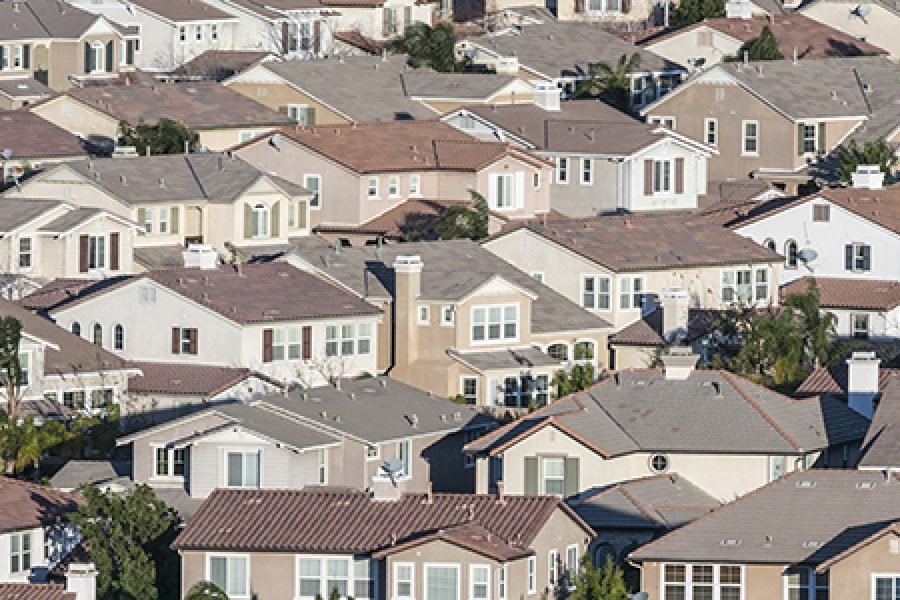California’s “Been There, Done That”
California’s sky-high rental housing rates are now being felt by the rest of the country. Apartment List’s most recent report in February showed that rents grew 17.6 percent annually for all housing types and increased 0.6 percent over the month. This tracks the Bureau of Labor Statistics’ Consumer Price Index (CPI), which also reported a month-to-month increase of 0.6 percent — the highest level in 35 years. And the worst is yet to come. The CPI rent data is a lagging indicator because it doesn’t factor in new leases.
Who is gobbling up what little rental housing there is? Middle class families, say economists. Since the middle class has been priced out of buying single-family homes in many areas around the country, they are instead opting to rent, fueling the increases. The result has been fewer choices and housing hardship for low-income and working-class families.
Disturbingly, politicians at state houses and city halls are resorting to rent control in response to the problem. The Wall Street Journal reports that measures to limit annual rent increases to no more than 2 to 10 percent are on the legislative agenda in a dozen states. Even in Massachusetts, where local rent control was banned nearly 30 years ago due to a statewide referendum, Democrats are advancing a bill that would repeal the state ban.
To America’s states and cities thinking about rent control: Warning — California’s Been There, Done That.
California is one of two states (Oregon is the other), that has statewide rent control. The California Tenant Protection Act in effect since January 1, 2020, puts a cap on rent increases at either 5 percent plus the local CPI, or 10 percent of the lowest rent charged during the prior 12 months — whichever is less. Rent can only be raised twice over any 12-month period. The law also doesn’t override more restrictive city and county rent control laws, but it might apply to units that local laws don’t cover.
And what do we have to show for the most far-reaching rent control law in the U.S.? Next to nothing. California is still home to the U.S.’s top four most expensive cities to rent: San Jose, San Diego, Los Angeles, and San Francisco. Statewide vacancy rates at 3.5 percent are touching historic lows, falling by more than 28 percent year over year. The average Fair Market Rent (FMR) for a two-bedroom apartment in the state is about $2,030. To afford rent and utilities, a household must earn $6,766 per month or $81,191 per year. The five most common occupations in California do not earn this much.
This month, Gov. Gavin Newsom rolled out his plan to dramatically increase the amount of new housing being built in the state. By 2030, the state will direct local governments to build 2.5 million new homes, with at least 1 million of those set aside for low- and middle-income residents. He plans to do this by:
- Encouraging greater diversity of housing types in all neighborhoods
- Encouraging new housing development in existing communities to reduce vehicle miles traveled (VMT) and mitigate climate change while simultaneously addressing housing need
- Implementing climate resiliency and sustainable building strategies
- Supporting local and regional governments to encourage more housing at a range of prices, including identifying interventions to lower development costs and timelines for housing at all income levels
- Researching alternative housing models with lower production costs, such as manufactured and factory-built housing, including labor standards; and
- Continuing to hold local communities accountable for compliance with state housing laws
Reading through Newsom’s To Do list, you can’t help but think that the housing plan is less about housing people and more about satisfying climate change activists and union lobbyists. “Encouraging,” “researching” and “complying” doesn’t exactly inspire confidence.
To reach Newsom’s lofty goals, he’s going to have to do the tough stuff: halt the growth of mandates for so-called “climate-smart” housing that raises the cost of building; modernize the California Environmental Quality Act or CEQA, which is responsible for holding up much of the building in the state; and reform housing laws that disincentivize current and prospective landlords.
To get to 2.5 million houses by 2030, more than 300,000 new homes must be built each year beginning now. We’ll revisit this plan a year from now and check his progress.
Rowena Itchon is senior vice president of the Pacific Research Institute.


